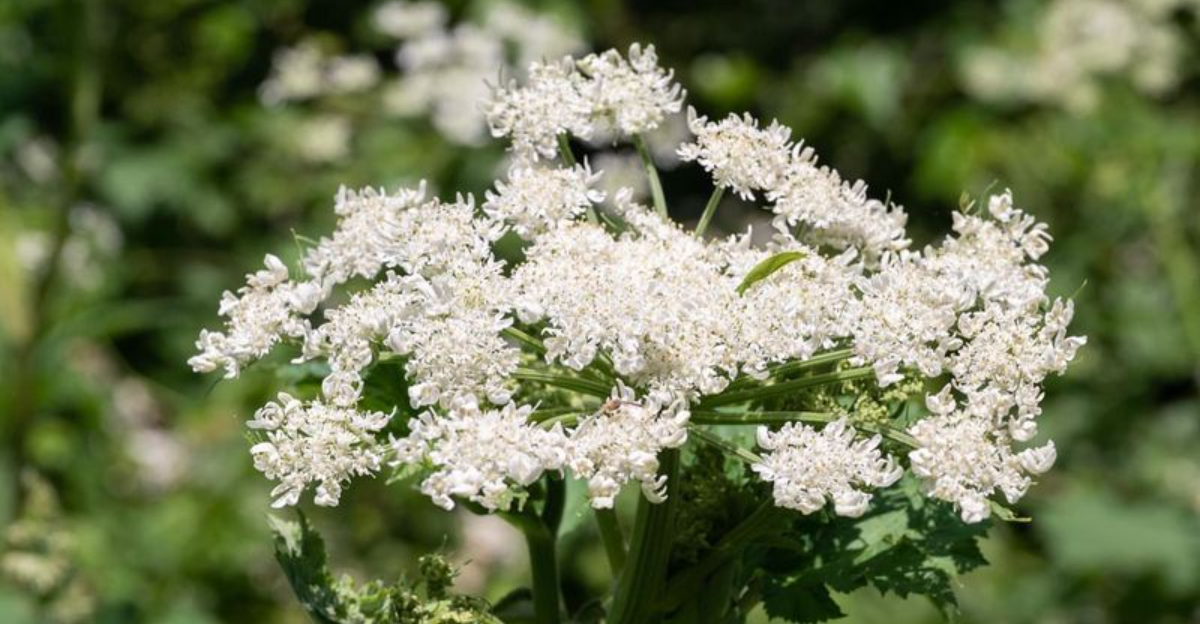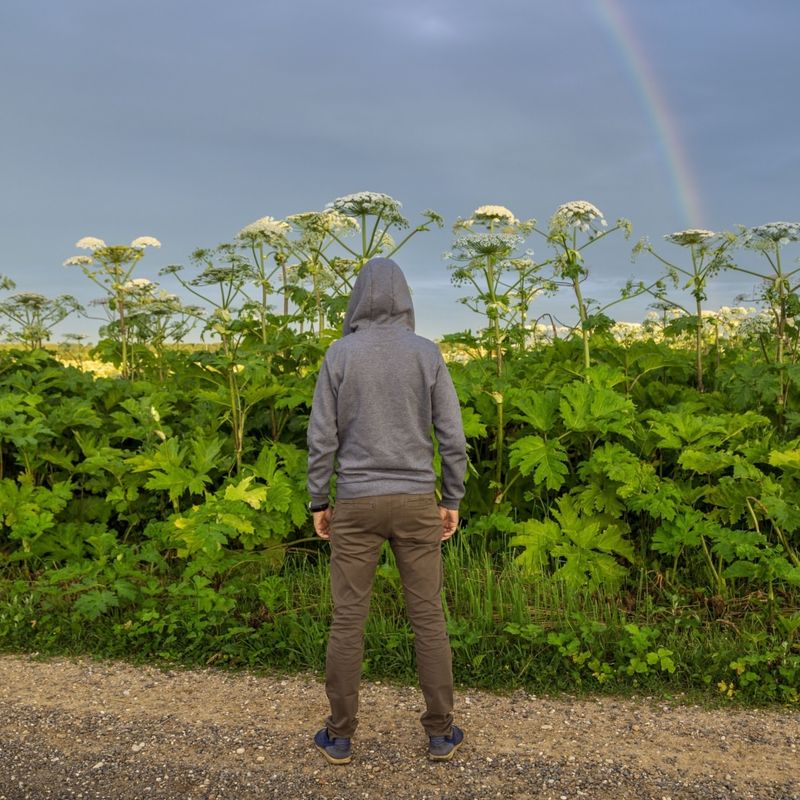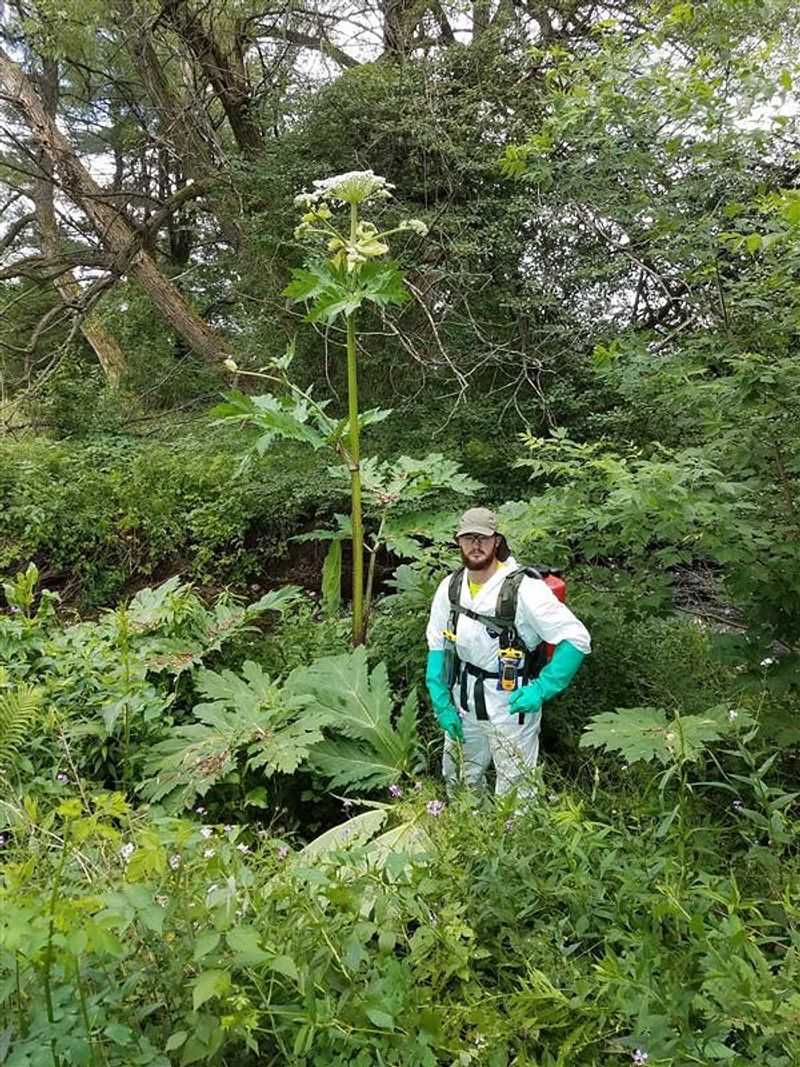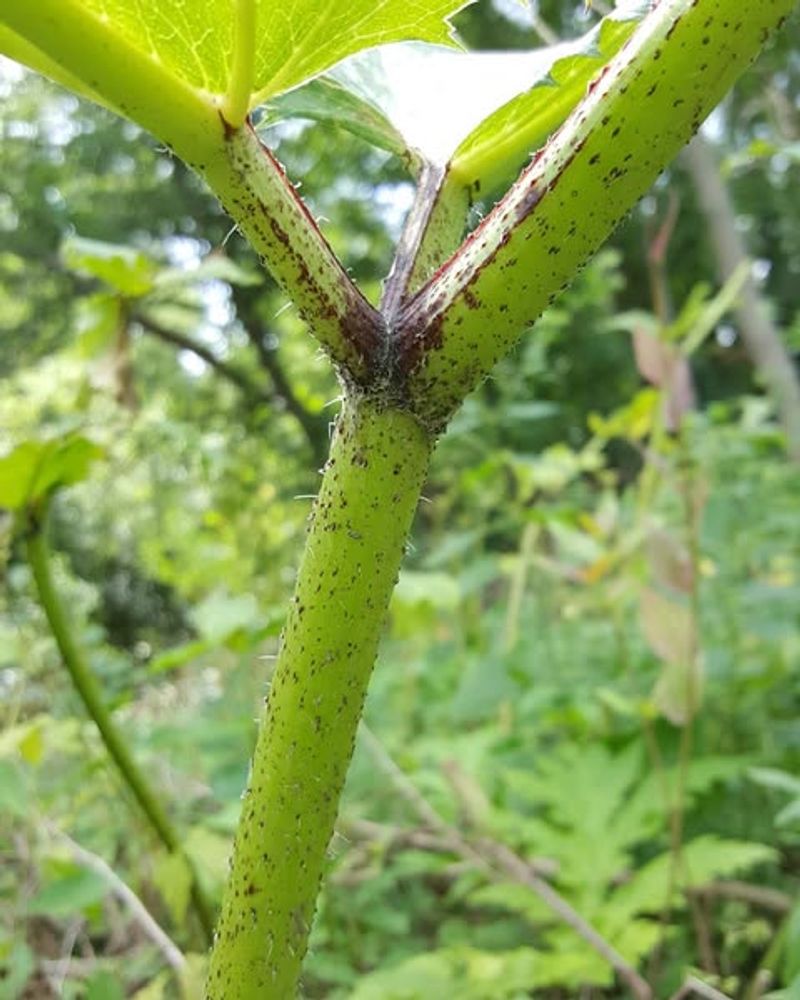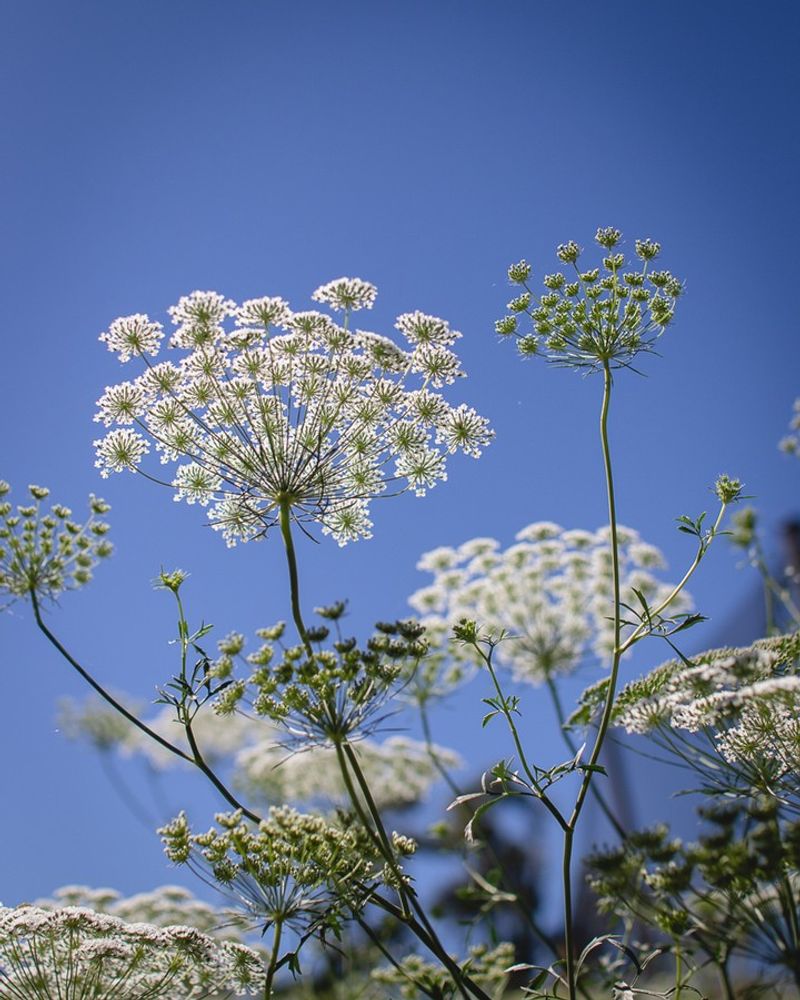A brush with the wrong weed can turn an ordinary day in the yard into a painful ordeal.
One towering invader packs a secret that reacts with sunlight and sparks severe burns on bare skin.
Its size alone draws attention, yet the real danger hides in its sap.
Giant Hogweed looks impressive with its towering stems and white flowers, yet touching it with bare skin can cause serious burns and blisters.
Ohio homeowners need to know how to identify this invasive species and protect themselves from its harmful effects.
Toxic Sap Causes Severe Skin Burns
Giant Hogweed produces a clear, watery sap that contains dangerous chemicals called furanocoumarins.
When this sap touches your skin and gets exposed to sunlight, it causes a painful reaction called phytophotodermatitis.
Your skin becomes extremely sensitive to UV rays, leading to severe burns, blisters, and dark purple scars that can last for years.
Even a tiny amount of sap can cause damage, which is why you should never touch this plant without full protective clothing and gloves covering every inch of exposed skin.
Grows Taller Than Most People
Picture a plant that towers over your head, reaching heights between 8 and 15 feet tall.
Giant Hogweed stands out in any landscape because of its massive size, making it look almost prehistoric.
The thick, hollow stems can grow as wide as 4 inches across and are covered with purple blotches and coarse white hairs.
Its enormous leaves can span up to 5 feet wide, creating an umbrella-like canopy that casts deep shadows on the ground below, making it impossible to miss once you know what to look for.
White Flower Clusters Span Up To 2 Feet
During late spring and early summer, Giant Hogweed produces spectacular white flower clusters that look like massive umbrellas.
Each flower head contains dozens of tiny white blooms arranged in a flat-topped pattern called an umbel.
These impressive flower clusters can measure up to 2.5 feet across, attracting attention from far away.
While they might look beautiful and tempting to photograph up close, remember that every part of the plant remains dangerous, so admire these blooms only from a safe distance using binoculars or a zoom lens.
Originally Brought As An Ornamental Garden Plant
Believe it or not, people actually brought Giant Hogweed to North America on purpose during the early 1900s.
Wealthy landowners and botanical gardens imported it from the Caucasus Mountain region because they thought its dramatic size and showy flowers would make impressive garden decorations.
What seemed like a good idea quickly became a nightmare when the plant escaped cultivation and spread into wild areas.
Now it grows uncontrolled along streams, roadsides, and wooded areas throughout Ohio, proving that introducing foreign plants without understanding their behavior can have serious consequences.
Produces Thousands Of Seeds That Spread Easily
A single Giant Hogweed plant acts like a seed factory, producing between 20,000 and 50,000 seeds each year.
Those flat, oval seeds measure about half an inch long and have ridged edges that help them float on water.
Streams and rivers carry the seeds downstream, spreading the invasion to new areas quickly.
Seeds can also stick to clothing, animal fur, and equipment, hitching rides to distant locations where they establish new colonies and continue the cycle of spread across Ohio neighborhoods and natural areas.
Often Confused With Harmless Native Plants
Many Ohio residents mistake Giant Hogweed for harmless look-alikes like Cow Parsnip or Queen Anne’s Lace.
Cow Parsnip grows much shorter, reaching only 3 to 8 feet, and lacks the purple blotches on its stems.
Queen Anne’s Lace has much smaller flowers and delicate, feathery leaves compared to Giant Hogweed’s massive foliage.
Learning these key differences could save you from a painful encounter, so take time to study identification guides before touching any large plant with white flowers in your yard.
Requires Professional Removal With Protective Gear
Never try to remove Giant Hogweed yourself without proper training and equipment.
Professionals wear waterproof suits, face shields, thick rubber gloves, and boots that cover every bit of skin to avoid contact with the toxic sap.
They use special tools to dig out the entire root system, which can extend several feet underground.
After removal, the plant material must be bagged carefully and disposed of properly to prevent spreading seeds.
Contact your local Ohio agricultural extension office or invasive species control service if you suspect this dangerous plant is growing on your property.

